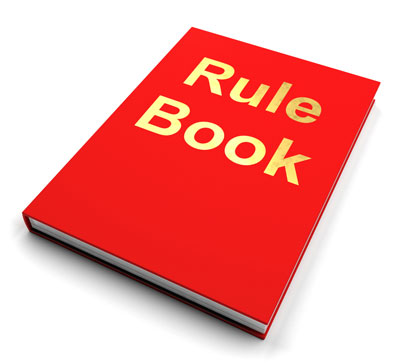By Thomas G. Wilkinson, Jr. & Thomas M. O’Rourke
 According to some estimates, discovery costs account for between 50 and 90 percent of total litigation costs. In an attempt to streamline federal discovery, the Judicial Conference Committee on Rules of Practice and Procedure (the “Standing Committee”) has published proposed amendments to the Federal Rules of Civil Procedure. Unlike previous proposed amendments, which have sought to broaden discovery, these proposed rules significantly restrict the scope of discovery and the presumptive number of discovery requests and depositions available.
According to some estimates, discovery costs account for between 50 and 90 percent of total litigation costs. In an attempt to streamline federal discovery, the Judicial Conference Committee on Rules of Practice and Procedure (the “Standing Committee”) has published proposed amendments to the Federal Rules of Civil Procedure. Unlike previous proposed amendments, which have sought to broaden discovery, these proposed rules significantly restrict the scope of discovery and the presumptive number of discovery requests and depositions available.
If the proposed amendments are adopted, discovery requests would be limited to the parties’ “claims and defenses” and tailored to be:
proportional to the needs of the case considering the amount in controversy, the importance of the issues at stake in the action, the parties’ resources, the importance of the discovery in resolving the issues, and whether the burden or expense of the proposed discovery outweighs its likely benefit.
In addition, absent agreement between the parties or a court order, parties would be limited to 5 depositions, 15 interrogatories and 25 requests for admission.[1]
The proposed amendments represent an important step in the effort to control pretrial costs and delay in federal litigation. However, the restrictions imposed on the scope of discovery and the availability of discovery tools have been subject to criticism. One critic, U.S. Senator Christopher Coons of Delaware, Chair of the Subcommittee on Bankruptcy and the Court, predicted that these limitations would have a negative impact in smaller cases and “could mean that responsible parties will remain unaccountable—not because the plaintiff’s allegations are untrue, but because plaintiff lacks the evidence to prove them.” See Todd Rugur, Discovery Rule Changes Greeted with Skepticism in Senate, Nat’l Law J. (Nov. 11, 2013).
For example, consider the following hypothetical case: A history professor (“Plaintiff”) brings a federal employment discrimination action alleging that her former employer, a university, denied her tenure because of her gender. The university’s decision was made by a three-member panel, but it was based on the recommendation of a committee composed of five faculty members in the history department. Her theory is that she was held to a different standard than similarly situated male professors who received tenure and that certain members of both the committee and the panel held gender stereotypes about her that impacted their decision. She also alleges that her direct supervisor, who was not on the committee or the panel, gave her negative performance reviews due to her gender, which were considered by the committee and the panel.
As discussed below, under the proposed amendments, Plaintiff could face some difficulty obtaining the necessary discovery to sustain her claim.
The Shifting Scope of Rule 26
Under the current rules, discovery is limited by the principle of proportionality. Fed. R. Civ. P. 26(b)(2)(C)(iii). The proposed amendments, however, take this familiar limiting principle and use it to define the scope of discovery. See Proposed Amendments, at 296. This is a significant rule change that may increase discovery costs and undermine the pursuit of legitimate discovery in federal cases.
“Proportionality” is an amorphous standard that will inevitably lead to unpredictable and wide-ranging interpretations. For example, before the parties have exchanged responsive information, it is difficult to assess how beneficial a discovery request will be “in resolving the issues” or “the likely benefit of discovery” requests. Early in the discovery process, rather, the “amount in controversy” and the “importance of the issues at stake” will likely be the predominate factors used to assess the proportionality of a request.
Judges and parties may significantly disagree about the proper scope of discovery in a case that is perceived by the court to be worth X dollars when the party values the same case at Y dollars, or that involves a particular issue that may generate important precedent for similar cases in the future. Differing views about the reasonable extent of discovery given the money or issues at stake will yield varying results and encourage early and expensive motion practice regarding the basic parameters of discovery. For instance, how “important are the issues at stake” in the Plaintiff’s case? The answer depends on who you ask.
Moreover, suppose Plaintiff is seeking $300,000 in the lawsuit. Is she entitled to discovery regarding all tenure decisions made by the university within the last 5 years or will her request be limited in time and scope? What about e-mails sent or received by the members of the panel, the committee or her supervisor around the time of the tenure decision? Under the proposed amendments, Plaintiff’s relatively low damage number could inhibit her ability to fully investigate these issues and potentially prevent her from uncovering critical evidence.
Restricting the Number of Depositions
The Standing Committee’s proposed reduction to the presumptive number of depositions is based, in large part, on statistics reflecting that “less than one-quarter of federal court civil cases result in more than five depositions, and even fewer in more than 10.” Proposed Amendments, at 268. These statistics, however, are drawn from the number of depositions taken by attorneys in closed cases that featured at least one deposition. This data, therefore, includes cases that would have produced more depositions but were resolved early through settlement or motion practice. Further, with one exception, these statistics also reflect that more than five depositions are taken by one side or the other in 40% of cases involving an expert and non-expert deposition.
Considering these issues, the accuracy of the Standing Committee’s conclusion that the new presumptive limit will have “no effect in most cases” is subject to debate. Id. at 268. If courts view the presumptive limit as an inflexible barrier to more extensive discovery and adopt a “one size fits all” approach to deposition discovery, parties will be denied necessary and relevant evidence. This possibility may encourage some parties to employ the presumptive limit as a tactical device to stall and constrict legitimate deposition requests.
 Indeed, in our hypothetical case, there were eight individuals involved in the decision to deny Plaintiff tenure. This number does not include any of Plaintiff’s other colleagues, her supervisor or potential expert witnesses. With a presumptive limit of five depositions, Plaintiff could be significantly limited in her ability to depose material witnesses. The university, for example, could convince the Court that an employment discrimination case involving $300,000 does not justify extending the presumptive limit and leave the Plaintiff without important information and ammunition for purposes of settlement or trial.
Indeed, in our hypothetical case, there were eight individuals involved in the decision to deny Plaintiff tenure. This number does not include any of Plaintiff’s other colleagues, her supervisor or potential expert witnesses. With a presumptive limit of five depositions, Plaintiff could be significantly limited in her ability to depose material witnesses. The university, for example, could convince the Court that an employment discrimination case involving $300,000 does not justify extending the presumptive limit and leave the Plaintiff without important information and ammunition for purposes of settlement or trial.
Instead of cutting the presumptive number of depositions in half, it may be more appropriate to amend Rules 30 and 31 to expressly allow parties to file motions to limit the number of an opponent’s depositions based upon the proportionality principles set forth in Rule 26(b)(2)(C)(iii). This compromise would enable litigants such as Plaintiff to take more than 5 depositions without having to seek the approval of their opponent or the court, but where warranted provide a vehicle for a party to urge the court to restrict the scope of deposition discovery.
Restricting the Number of Interrogatories
Similarly, the proposed amendment to Rule 36 restricts the presumptive number of interrogatories available, reducing the number from 25 to 15 (including subparts). In all but the most straightforward cases, 15 interrogatories may be insufficient. Indeed, the Plaintiff in our hypothetical case would be hard pressed to compose 15 interrogatories to cover: the university’s policies and procedures for making tenure decisions; the decision reached in her case; the individuals involved in that decision; and the university’s tenure decisions with respect to similarly situated male professors.
As a result, parties like Plaintiff may have to resort to early and expensive motion practice to secure additional interrogatories, particularly considering that other discovery tools, such as depositions, are not as freely available under the proposed amendments. If applied inflexibly, this presumptive limit will distract the parties (and the court) from the substantive issues in the case and unnecessarily constrict legitimate discovery of relevant evidence.
The proposed amendments, therefore, if adopted, should clearly communicate that the presumptive limits are not a “one size fits all” approach to the discovery needs of all cases or  particular classes of cases.
particular classes of cases.
The Proposed Amendments Will Impact More Than Just Plaintiffs
The proposed amendments pose a significant challenge for all federal litigants, not just plaintiffs. Although the above hypothetical involved a plaintiffs’ case, defendants may encounter similar hurdles in securing necessary discovery, particularly in cases involving multiple plaintiffs or witnesses, such as in class or collective actions. If the new presumptive limits for depositions and written discovery are applied inflexibly, defendants may be unable to secure the information necessary to mount an adequate defense. While the proposed amendments have for the most part been welcomed by defense and corporate counsel, the additional motion practice necessary to obtain relevant information may in some cases serve to drive up rather than reduce costs and further delay resolution of cases.
For those interested in weighing in on the proposed amendments, the Standing Committee is accepting public comments until February 15, 2014. Comments may be submitted online at http://www.uscourts.gov/RulesAndPolicies/rules/proposed-amendments.aspxor by mail to:
The Committee on Rules of Practice and Procedure
Administrative Office of the United States Courts
One Columbus Circle, NE
Washington, DC 20544
[1] Along with restricting the scope of discovery, the proposed amendments also clarify the standard for imposing sanctions for a party’s failure to preserve discoverable information. Under the proposed amendments, Rule 37(e) would be rewritten to reflect that only willful or bad faith destruction of evidence can result in sanctions, unless the “opposing party’s actions . . . irreparably deprived a party of any meaningful opportunity to present or defend against the claims in the litigation.” Id. at 315. This change is designed, in part, to ensure that potential parties do not engage in unnecessary and expensive “overpreservation” for fear of sanctions in future litigation.
__________________________
 Thomas G. Wilkinson, Jr., is a member of Cozen O’Connor in Philadelphia, where he practices in the Commercial Litigation Department (twilkinson@cozen.com). He is the Immediate Past President of the Pennsylvania Bar Association and past chair of its Civil Litigation Section.
Thomas G. Wilkinson, Jr., is a member of Cozen O’Connor in Philadelphia, where he practices in the Commercial Litigation Department (twilkinson@cozen.com). He is the Immediate Past President of the Pennsylvania Bar Association and past chair of its Civil Litigation Section.
 Thomas M. O’Rourke is an Associate at Cozen O’Connor, where he practices in the Commercial Litigation Department (tmorourke@cozen.com). For a more detailed analysis of the proposed amendments, see their full length article in the Pennsylvania Bar Association Federal Practice Committee Newsletter for November 2013.
Thomas M. O’Rourke is an Associate at Cozen O’Connor, where he practices in the Commercial Litigation Department (tmorourke@cozen.com). For a more detailed analysis of the proposed amendments, see their full length article in the Pennsylvania Bar Association Federal Practice Committee Newsletter for November 2013.

